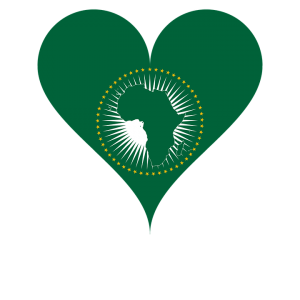By Philippe Hugon
Translation: Anton Stzepourginski
Passage au crible n°84

Pixabay
On the 28th of January 2013, an international donor conference opened at the AU (African Union) headquarters in the Ethiopian capital Addis Ababa in order to finance the deployment of an African stabilization force and rebuild the Malian army. This event gathered the UN (United Nations), the AU, the European Union, Japan and the United States. According to the AU, $460m are required to support the AFISMA (African led International Support Mission to Mali). Most of this amount ($240m) shall be used to rebuild the Malian army and to fund Chadian troops. The AU is committed to pay 10% of the total amount.
> Historical background
> Theoretical framework
> Analysis
> References
The UN passed resolution 2085 on the 20th of December 2012, a necessary first step towards any conflict resolution. The next step was supposed to be political negotiations or the use of international armed forces to help African and Malian troops. Yet, France decided there was no time to deploy AFISMA, to rebuild Malian military and to establish a legitimate government in Mali. Thus, the French intervention in Mali didn’t violate the UN resolution 2085, on the contrary, it was asked by President Traoré. Only Qatar, Tunisia and Egypt denied approval of such intervention (not even China, Russia or Algeria) and it was broadly supported by Malians and Africans. France is now on the front line, feeling a bit lonely despite the logistical support provided by its Western allies (aerial refueling tankers, Transall, drones and intelligence).
The Franco-Malian military operation, (Operation Serval) was a long-time planned operation. But because of the failure of the Ouagadougou negotiations and the change in the Ansar Dine position, there was no other choice left but to intervene as quickly as possible. The occupation of the town of Konna by the Jihadists was threatening the strategic base of Sevare along with Mopti and Bamako, further South. Also, due to climate conditions, the intervention couldn’t take place between March and September. The intervention of January the 11th of 2013 mobilized French airforce (Rafale and Mirage planes, helicopters), light armored vehicles and 2500 land soldiers (special forces, and 250 paratroopers in Timbuktu on the 27th of January). French troops first stopped the military advance of the Jihadists, they then took control of the Niger Bend backed up by Malian armed forces (first in Gao, then Timbuktu) and Chad troops (in Kidal, where the NMLA (National Movement for the Liberation of Azawad) was present). Jihadists scattered in Northern Mali (in the Adrar of Ifoghas) and along the border with neighboring countries (in the forest near Djabali). France allies (Germany, Canada, Denmark, the United Arab Emirates and Italy) gradually supported this operation, especially after the In Amenas hostage crisis on the 16th of January. After the initial French intervention, African countries started to deploy their troops, such as Chad, Niger and Burkina Faso.
Theoretical framework
1. The war in Mali is another example of asymmetrical warfare. In such conflicts national or international troops fight armed militias. Whereas the former are motivated and fully equipped, to a greater or lesser extent, the latter are determined fanatics up for guerrilla activities and acts of terror. Yet, in Mali, those armed militias are not homogenous. Firstly, there is the NMLA: A cross-border group of tuaregs which follows a more secular Islam and which asks for greater autonomy in the Azawad area, if not independence. Secondly, there is Ansar Dine: This AQIM-affiliated (Al-Qaeda in the Islamic Maghreb) group is led by Iyad Ag Ghaly and calls for the full application of Sharia law in Mali. In January 2013, a new group which calls itself the Islamic Movement for the Azawad and claims to be closer to the NMLA, split from Ansar Dine. Thirdly, there are other groups such as AQIM, its enemy the Movement for Oneness and Jihad in West Africa which profits from drug trade, and the Northern Nigerian terrorist group Boko Haram.
2. This war also shows how local conflicts can now easily become international. As an example, in this situation, there are interlinkages between Mafia groups and radical Islamists. They both fight against Western presence which is commonly associated with multinational companies working in the hydrocarbon sector and the mining industry.
The war in Mali is a multiscale situation with its specific factors and actors. It was caused by several things: Firstly, the Tuareg people had been making claims for a very long time, and they recently took advantage of the fact that mercenaries of Gaddafi were returning to Mali after the war ended in Libya. Secondly, radical Salafism has gained in popularity. And thirdly, when President Amadou Toumani Touré was in power, neither the army nor the government was tough enough against criminal activities. In fact, the military coup on the 22th of March 2012 only confirmed the disintegration of the Malian State and its army. This led Northern Mali to become an uncontrolled area.
The social and economic dimension of the Sahelo-Saharian crisis has to be taken into account despite the small share of Northern Mali in the national GDP (5%). Indeed, on one hand many young people are left with no future because of a demographic boom. Whereas on the other hand, there is a proliferation of all kind of traffics (mostly drugs and guns) plus a spread of environment and food crisis because of climate conditions and the vulnerability of ecosystems in this region. The growing insecurity made the failure of the Malian State and its regional and local authority even worst. Mali was about to become the epicenter of a crisis in the whole Sahelo-Saharian region. That is why several regional and international organizations, along with major states, agree with the military intervention, as it was shown by the international donors’ conference in Addis Ababa. The first part of the intervention was a great success thanks to air force (bombing of storage facilities for fuel and weapons, and destruction of armored combat vehicles) and the troops who took cities back. Yet, Jihadists chose to defect rather than fight which means that there will be many sources of resistance all across a huge territory. This is a very serious problem because hiding and launching surprise attacks are what they do best while most African armies don’t have the experience of such combats. Today, the main question is whether or not African armies will be up for this job. And the answer doesn’t look too promising, especially when it comes to the Malian army which clearly needs to be rebuild. Yet, a solution must be found because as in any other asymmetrical conflicts, the war could get caught in a spiral system and last longer than expected. Still, Mali is not Afghanistan, whereas the Taliban are very popular amongst Pashtuns, Jihadists are seen as aliens. Effective border checks would allow keeping them from getting fuel, ammunitions and trucks. Nevertheless, the major unknown factor in the region is Algeria. Many Algerians are involved in various traffics in Northern Mali and it is difficult to say how the authorities will deal with that situation. Lessons of the failure in Afghanistan have to be learned, otherwise all the financial assistance will be lost in the network of corruption. This military intervention must include other dimensions: political (elections, democratic power, more autonomy for Northern Mali), humanitarian, economical and diplomatic. French troops are to be replaced by Malian and African armies. That is mainly why the international donors’ conference was organized. Also, local populations have to take part in restoring security in the country, especially the Tuareg people who must join in this political and military game. There are many diplomatic commitments just like this international donors’ conference, but it is not enough to finance AFISMA with its 8000 soldiers or to rebuild the Malian army. Those are two essential points that have to be dealt with, even if a peacekeeping operation is being planned. Finally, there can’t be military support without proper international financial help (to fight against illicit trafficking, to implement urban renewal policies, to promote local projects and a decentralized cooperation etc.).
References
Gourdin Patrice, « Al-Qaïda au Sahara et au Sahel ». Diploweb.com, 11/3/2012
Hérodote, Géopolitique du Sahara, (142),2011.
Holeindre Jean-Vincent, Geoffroy Murat (Éds.), La Démocratie et la Guerre au XXIe siècle. De la paix démocratique aux guerres irrégulières, Paris, Hermann, 2012.
Hugon Philippe, Géopolitique de l’Afrique, Paris, SEDES 2012.




